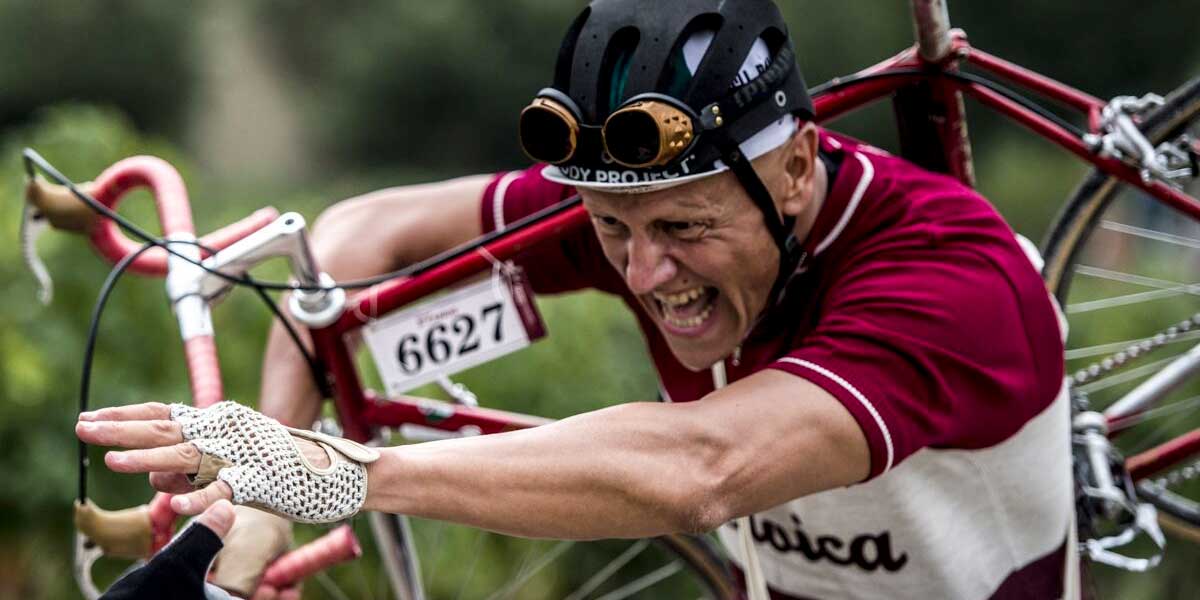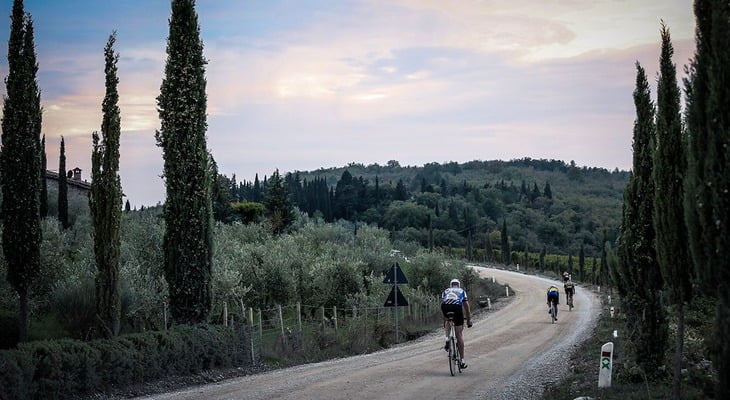Look at any photo of L’Eroica and you will find a hill. Well, that’s what you call them before you try to climb them. At L’Eroica, it is rare to find yourself stuck to the wheel of the rider in front of you; such things happen in races.
Here, sometimes, there are no wheels at all in the photos. In my experience, L’Eroica is a solitary voyage. Alone, among thousands, and more. Because it is the perfect summary of what cycling is all about: an individual together with everybody but alone in the effort.
Look at any photo and it is likely to be in black and white, like the first time I saw L’Eroica. I was expecting a game but I found a book, like those I had whose images I took for granted: sweat and fatigue and a touch of sadness. Too often, we associate the heroic cycling of dusty roads with suffering and an unfortunate and difficult social context. At L’Eroica, I found that book and coloured in the pages.
You are dazed, even before you take out the camera out of your bag. So, you go back to reading about that era of cycling and you realise that they were not unfortunate at all, actually they were proud and fearless. They were handsome even when fatigued and they were attractive to women, especially at that time when cycling held a different weight.
Those photographs in black and white, which were actually grey and yellowish, were vivid colours when the camera was pointed at them. It’s a ritual that is repeated every year, together with the silence and that hill that you will never overcome; you’ll end up with your feet on the ground but it doesn’t matter. Here, if the going is slow, nobody minds, it means that you’ll finish later and enjoy the ride for longer because the worst thing would be to wear yourself out. In the silence, glances meet and some hold a promise. We’ll be back and we’ll seek each other out again.
Guido Rubino









